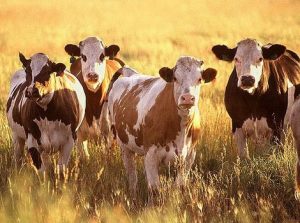South Dakota cattle producers are encouraged to include anthrax vaccine in their vaccination program when they turn out cattle to summer pastures. Recent flooding may increase the risk of cattle encountering anthrax this season, according to Dr. Dustin Oedekoven, South Dakota State Veterinarian.

Anthrax is caused by bacteria that can develop into an environmentally resistant spore form when
in the soil. Under the right conditions, these spores can become available for cows to graze. Once
ingested by cattle, the spores become activated and produce toxins that cause rapid death. Anthrax
can be prevented in cattle by administering a vaccine which is widely available, inexpensive, and
very effective.
Anthrax: North Dakota officials remind ranchers about vaccination
While the anthrax risk has been well-documented in many parts of South Dakota, and anthrax
vaccination of cattle is routine in those areas, it is not always possible to predict where cases may
occur. Flooding is an environmental factor which may aid in making anthrax spores available to
livestock. Cattle going onto pastures that have previously experienced flooding or into areas where
anthrax has been documented in the past, should be considered prime candidates for vaccination.
“During the summer, producers should take time to check all cattle frequently,” says Oedekoven.
“Cattle producers need to promptly investigate any unexpected deaths on pasture, whether in cows,
bulls or calves,” continues Oedekoven. “With anthrax and many other diseases, treatments and
preventive measures are available, and prompt action can help prevent excessive losses.” If a
producer suspects anthrax, the case should be reported immediately to local veterinarians or to the
State Veterinarian at 605-773-3321. Suspect carcasses should not be moved or disturbed until
a diagnosis has been made. “Local veterinarians are excellent sources of information for cattle
producers regarding anthrax,” Oedekoven said. For more information on anthrax, contact the
South Dakota Animal Industry Board.
- Bed bug infested cities: Philadelphia and New York top list
- Rabies in the US: Geography, wildlife, exposure and prevention
- Ohio: Legionnaires’ Disease outbreak reported at Mount Carmel Grove City Hospital
- Mosquito Control Program Reduces Dengue, Costs in Sri Lanka
- Elite Childcare Academy Closes Following Salmonella Outbreak
- Universal flu vaccine: Vaccitech initiates Phase 2b clinical studies for vaccine candidate
- Norovirus the most common foodborne illness in Europe
- Mayotte Rift Valley fever outbreak update
- Ukraine measles update: 52K cases in first 5 months

